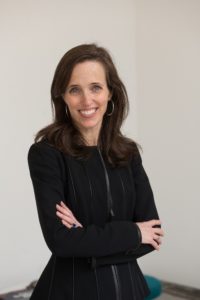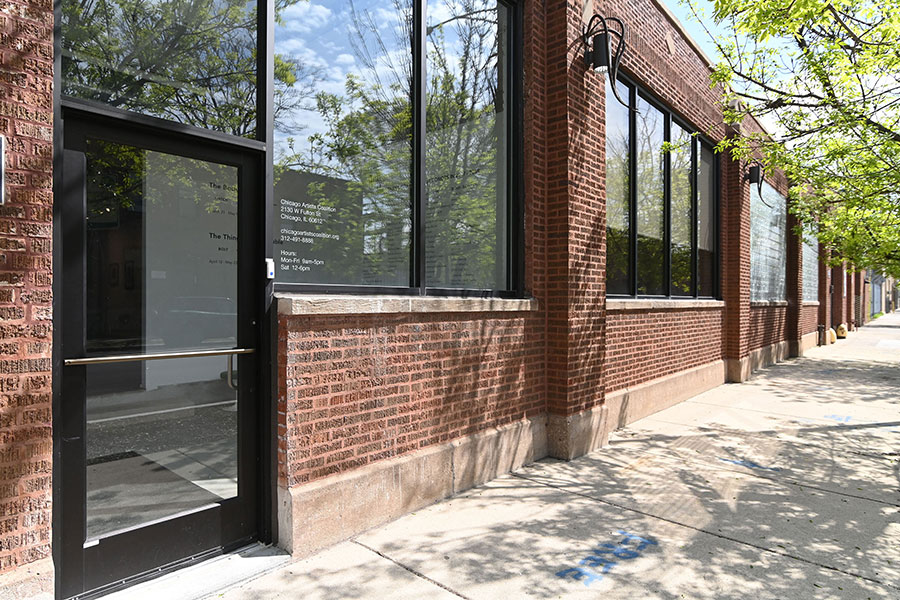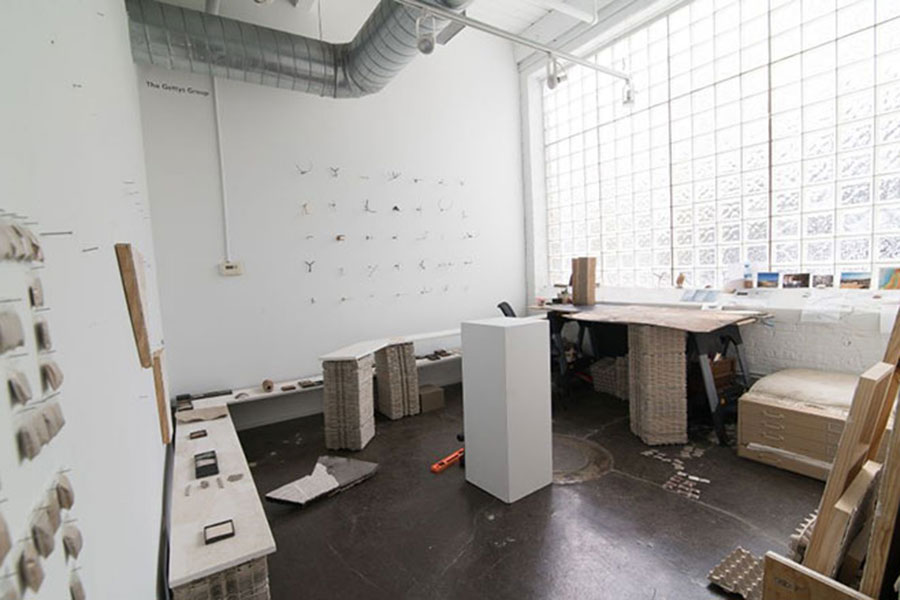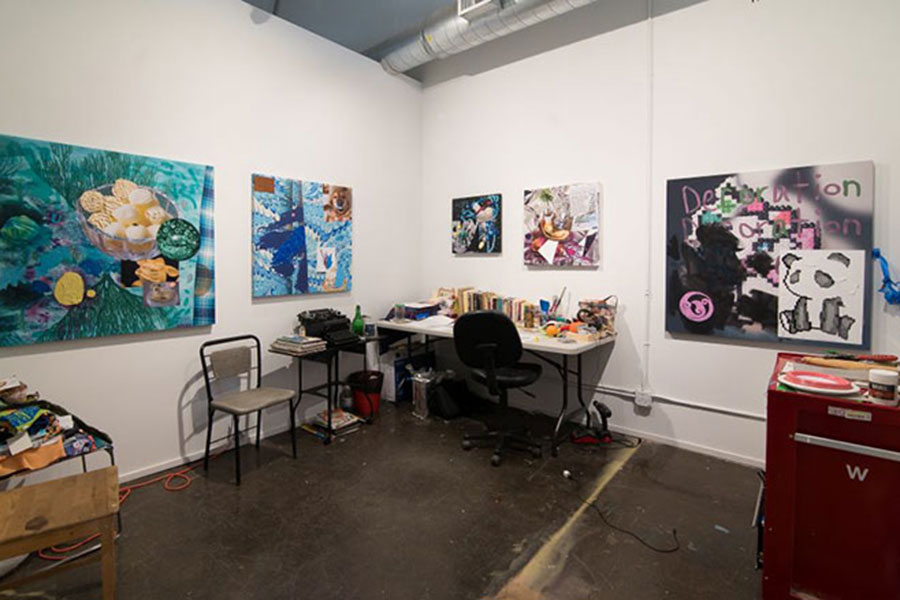 Chicago loves the Chicago Artists Coalition (CAC). It has been a go-to nonprofit for nearly 45 years, helping artists live, work, and thrive in the Windy City – and, in the process, bolster the area’s vibrant culture and economy.
Chicago loves the Chicago Artists Coalition (CAC). It has been a go-to nonprofit for nearly 45 years, helping artists live, work, and thrive in the Windy City – and, in the process, bolster the area’s vibrant culture and economy.
The organization’s popularity and endurance are also a testament to its willingness to plan for and embrace change. That sometimes means relocating. In 2018, CAC Executive Director Caroline Older told IFF, “Although the West Loop was fabulous to CAC, I knew our time there was limited.” Prices in the neighborhood had soared in recent years with the area’s growing popularity. Besides, she added, “The arts are known for trailblazing new neighborhoods.”
Older and her team targeted the Kinzie Industrial Corridor, a warehouse district that is home to a mix of fascinating ventures – everything from breweries and caterers, to printmakers and metal fabricators, to clothing and jewelry manufacturers. CAC launched a three-year capital campaign in 2017 to fund the move and build-out of a new space.
Older also tapped into an operating line of credit available to MacArthur Foundation grantees like CAC through the IFF-administered MacArthur Arts and Culture Loan Fund. The line of credit enabled CAC to put its cash reserves toward the build-out and, during the capital campaign, smooth out its operations.
This long-term, multi-pronged approach paid off. CAC’s first year in its new space was a success. “We love it here,” Older says. “And we’ve not had any dips in attendance.”
The photos below showcase CAC’s new space, which includes galleries, artist studios, a classroom for professional development sessions, and office areas. If you’re in Chicago, be sure to drop by in person – and check out some of Chicago’s coolest art while you’re there – at 2130 West Fulton Street, just west of Damen.
A classic brick façade

ABOVE: CAC’s new home is at 2130 West Fulton Street, just three blocks from a future Green Line El stop that Chicago plans to add to its transit system in 2020. After being in a 1920s West Loop warehouse that was not ADA-compliant, Older is especially excited about the new building’s accessibility, which “reduces barriers to entry for any and all artists.” She also points to its ability to accommodate future growth over the course of CAC’s 10-year lease: “With all of the units in this building, there will be turnover and opportunities for us to grow when we’re ready.”
A bright, inviting reception area

ABOVE: When you step in, you’re treated to a modern yet welcoming space with a stand of trees visible from the large windows.
Galleries where emerging artists can shine


ABOVE: The emerging artists CAC supports know their work will look its best in CAC’s gorgeous new galleries. And the city benefits, too. Says Older, “People who live in and visit Chicago want to discover art beyond what’s in the big institutions. That’s part of what keeps the culture and fabric here rich and strong.”
Work pictured in the first photo is from “The Body Is Work.” Artists who participated in the exhibit: Hale Ekinci, Shir Ended, and Mayumi Lake.
Work pictured in the second photo is from “The Thing and Its Double,” a solo exhibition by Danny Giles.
Specially designated classroom space for professional development

ABOVE: CAC’s professional development offerings help artists fill critical knowledge gaps that are rarely covered in art school: how to apply for grants, pitch your work to a gallery owner, launch a business around your art, and more. In CAC’s previous location, these trainings were squeezed inside the gallery itself; now the organization has a dedicated space to fulfill this critical educational component of its mission.
Artist studios to incubate talent and build community



ABOVE: CAC runs two year-long residency programs for promising artists and art curators. Those selected for the programs gain access to precious studio space that they can use 24/7; mentorship and feedback from Chicago art leaders representing the museum, academic, and for-profit gallery communities; opportunities to show their work or curate exhibits; and a comfortable, shared space that fosters networking. “Building a community is not to be underestimated,” Older says. “When artists leave our programs, they have a community of professionals and peers – people they can turn to, whether they need to discuss career options, share ideas about their artistic practice, or find a specialized fabricator to help them with an installation.”
Building a community is not to be underestimated,” Older says. “When artists leave our programs, they have a community of professionals and peers – people they can turn to, whether they need to discuss career options, share ideas about their artistic practice, or find a specialized fabricator to help them with an installation.
An equally inspiring space for staff

ABOVE: It can be tempting for nonprofits to focus their attention and budget on areas designed for clients and programs – sometimes to the exclusion of the behind-the-scenes people who keep the organization running. CAC clearly avoided this trap, providing staff with an inspiring space filled with natural light.
To learn more about CAC, its move, and how nonprofits can benefit from the MacArthur Arts and Culture Loan Fund, see Chicago Artists Coalition utilizes MacArthur program’s financial training to manage rapid growth.